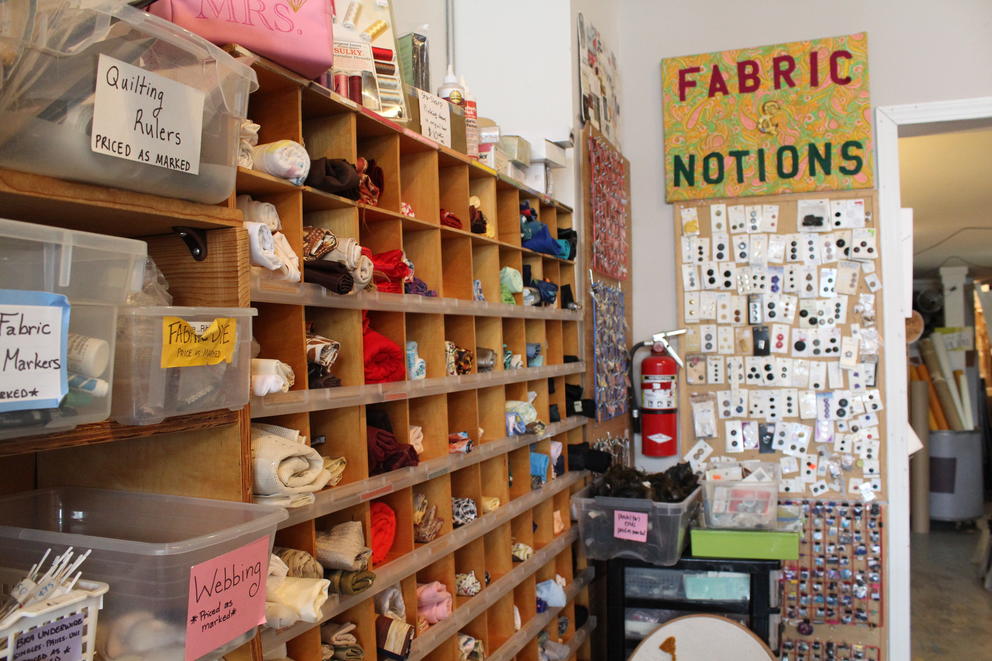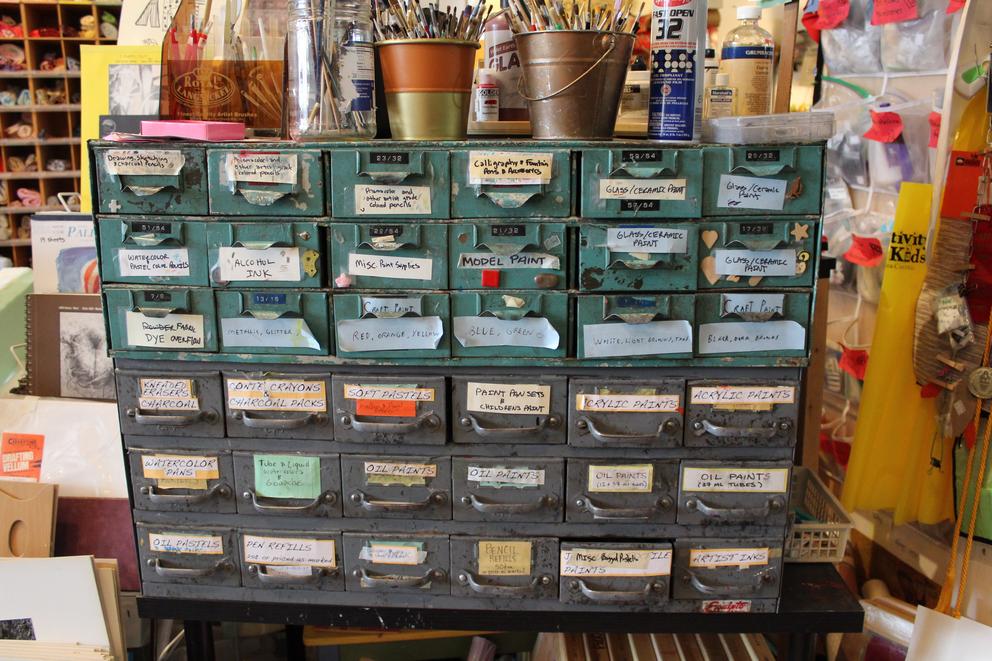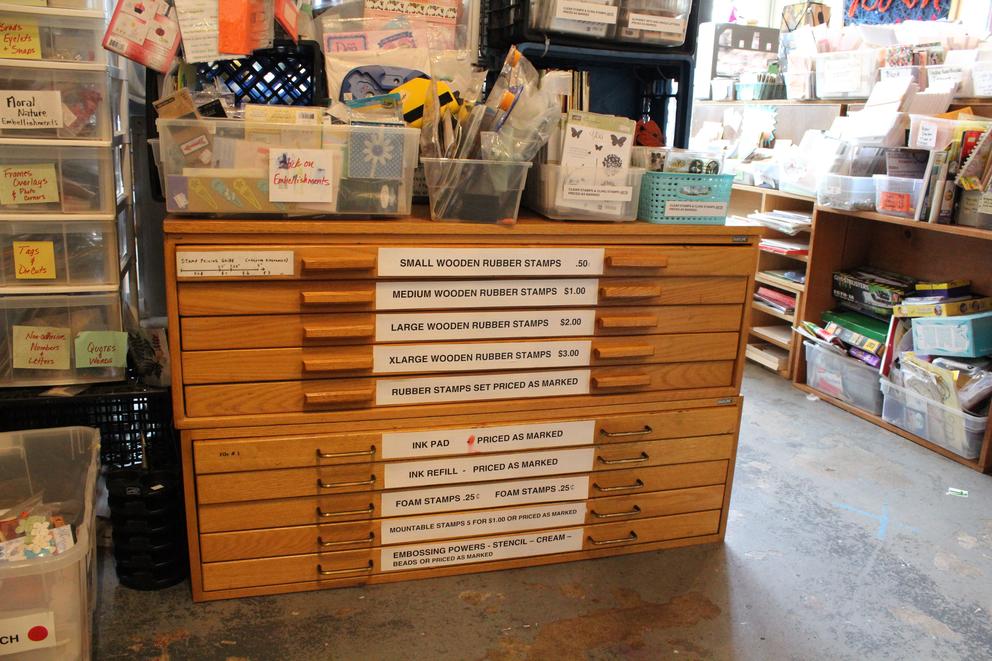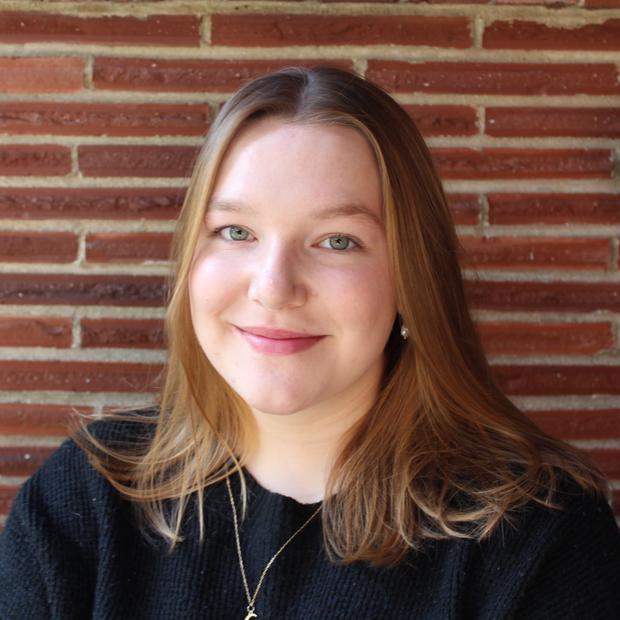Although Seattleites generate less waste than the national average, the city that prides itself on environmental leanings produces a lot more trash than other countries. High-income countries including the U.S. account for just 16% of the global population but produce more than a third of the world’s waste, according to the World Bank.
Americans and residents of other high-income countries consume a lot of stuff and throw away a lot of stuff.
Creative-reuse centers in Washington are finding new ways to keep things out of landfills by turning it into art. Seattle ReCreative, a nonprofit which opened in the Greenwood neighborhood in 2015, challenges its consumers to reevaluate their relationship with stuff and use materials in new and more sustainable ways.
“Our mission is really to promote creativity, community and environmental stewardship through creative reuse and art education,” said Boitano.
Seattle ReCreative operates like a thrift store for art supplies. The nonprofit receives donations from fine-art supplies to plastic straws, cutlery and beaded necklaces, all of which would otherwise end up in landfills. All materials are priced at 60% off retail value, with some marked free for teachers and BIPOC artists, according to Boitano.
“What we really believe in is more art and less trash,” she said. “If we can help people make great stuff and support artists to keep more of the money they make on a piece, that’s what we want to do.”
Boitano, who has roots in The Scrap Exchange, a creative-reuse center located in Durham, N.C., says this work challenged her to think differently about materials and how we use them.
“It was a thing where I was like, ‘Oh, this cork is not just a cork, it can be used for many other things,’” Boitano said.
Upon moving to Seattle, Boitano noticed the city lacked creative-reuse centers, and wanted to create a space that fostered new ways of thinking about materials and where kids and adults could create art together. Seattle ReCreative received its 501(c)(3) status in 2014 and opened in January 2015.
Although neither of the store’s founders have an environmental background, Boitano says they came from the notion that there is a tremendous amount of waste in the U.S. In an average month, Boitano says, Seattle ReCreative diverts 4,500 pounds of materials from landfills.
Other Washington creative-reuse centers, such as Olympia’s Lost and Found Crafts, are operating with a similar mission. Founder Michelle Isaacson was first introduced to creative reuse when her own crafting materials started to rack up a hefty cost. Surprised to learn Olympia didn’t have any creative-reuse centers, she opened Lost and Found Crafts in 2019.
“I want people to be able to create,” Isaacson said. “We’re so focused on staring at our phones and our screens, and I think that using the creative sides of our brains is so important.”
Isaacson listens when people tell her they can’t afford to craft because materials are too expensive, and says she used to wait for sales at big-box stores to try to find affordable materials. But with a store and a storage unit packed to the brim with discounted donated materials, Isaacson is on a mission to show people that art can be both affordable and sustainable.
“Just the amount of waste that is out there is absolutely unbelievable,” said Jamie Bartalamay, board chair of Seattle ReCreative. “If I have this thing and I might not use it anymore, there must be somebody that can.”
One person’s waste is another’s art, as these creative business people know. Some Seattle artists are going straight to the landfill to pick up their materials. The Recology CleanScapes recycling facility even has an artist-in-residence program that has resulted in gallery shows and large art installations, from woven tapestries made of discarded plastic bags to bowls made of shredded office paper.
Kristi Straus, associate teaching professor in the UW’s environmental studies program, believes high-income countries like the U.S. overvalue consumption and convenience.
“Our culture in the U.S. is pretty driven by stuff; I think a lot of our identity is wrapped up in what we have and can buy,” Straus said. “We have been taught to really privilege convenience, which ends up with a lot of waste.”
UW research professor Sally Brown says the biggest offenders in landfills are decomposable materials like food scraps and yard waste, which emit potent climate gases like nitrous oxide and methane and are supposed to be composted in yard-waste containers. However, plastic-based products like cutlery, straws and pens pose a different problem: their inability to decompose.
“It typically just gets into smaller and smaller pieces,” said Brown. “It’s nasty stuff that doesn’t go away.”
Microplastics, plastic particles less than five millimeters in length, are a growing concern in the environmental community due to our society’s increased reliance on these materials. Research suggests that microplastics in landfills can potentially leach into the nearby environment and disrupt ecosystems.
One method of reducing the waste stream going to landfills is recycling, a movement that in the U.S. dates back to the 1970s. But recycling isn’t perfect; for one thing, most plastic waste in the United States still isn’t recyclable, according to a Greenpeace study. While recycling saves raw materials for future use, when usable materials are recycled, their life cycle is cut unnecessarily short.
“Recycling is a good end-of-life option,” Straus said. ““I still feel like recycling is not ideal; the ideal is using less and reusing what you have.”
Although donating unwanted items is better than throwing them away, Boitano wants people to reexamine their consumption habits on a larger scale.
“I really wish that sometimes people would think through their consumption,” Boitano said. “I think one of the challenges is sometimes people think ‘Oh well, I can just give this away’ without that moment of thinking ‘Do I even need to be buying this thing in the first place?’”
Boitano notes that consumption is a tricky issue, though, given that so many people rely for their living on other people purchasing products. In the U.S., consumer spending is a catalyst for job creation and a large share of the country’s gross domestic product, the total monetary value of all goods and services produced in a country.
“It’s kind of a weird position to be in,” Boitano said. “We still sell stuff too. Without people buying things we also wouldn’t be in existence.”
By encouraging people to rethink materials as more than just “stuff,” Washington’s creative-reuse centers are challenging the status quo of American consumption, which supremely values convenience.
“It’s [convenience] not making us happier, and we are really damaging each others’ well-being and planetary well-being in the process,” Straus said. “Faster doesn’t necessarily mean happier and healthier, so why are we choosing faster?”





